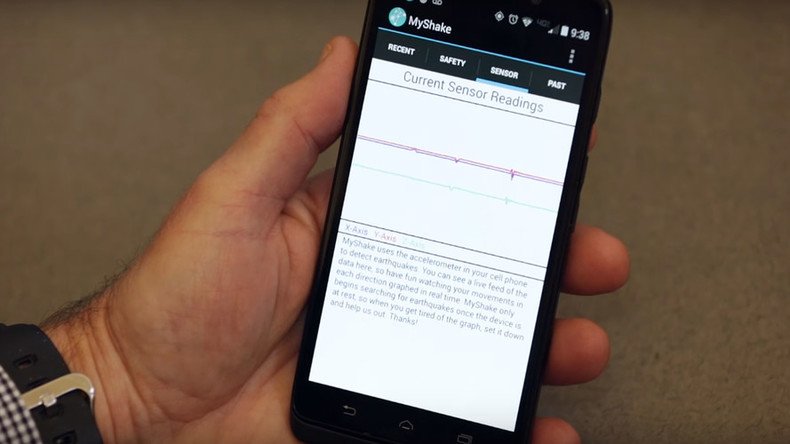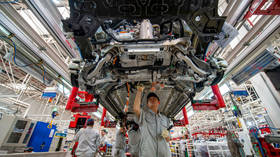Android will rock! Scientists create crowdsourced earthquake detector app for phones

Early warning systems for earthquakes can reduce harm to people and infrastructure, but the costs tend to be prohibitive. To get around that, scientists have created a new app to predict tremors by crowdsourcing phones as background quake detectors.
The free “MyShake” Android app works by scanning a smartphone’s accelerometer data in real time and forwarding any rumblings that fit the profile of seismic activity. If the algorithm decides that the shake is from an earthquake, it immediately sends basic information – such as the time and amplitude of the shaking, and the phone’s position as measured by GPS – to the University of California, Berkeley, where the program was created.
With "MyShake" app, your phone feels earthquakes and automatically warns scientists https://t.co/jZq1rmIqsppic.twitter.com/XpqvUvtTUb
— Popular Mechanics (@PopMech) February 12, 2016
Scientists say that if at least four phones detect shaking, and this represents more than 60 percent of all phones within a 6-mile (10-kilometer) radius of the epicenter, the program confirms an earthquake.
Based on the data, scientists can automatically alert other phones within the earthquake’s impending path in less than a second, notifying people of the magnitude of the quake. That is enough time to jump under a desk, or slip out to somewhere marginally safer.
The alert-feature is not on the app at the moment, but will be added later as an upgrade. Scientists need enough people to download and use the app before they can work out all the kinks. There are an estimated 16 million smartphones in California and 1 billion devices worldwide.
“MyShake cannot replace traditional seismic networks like those run by the US Geological Survey, UC Berkeley, the University of Washington and Caltech, but we think MyShake can make earthquake early warning faster and more accurate in areas that have a traditional seismic network, and can provide life-saving early warning in countries that have no seismic network,” Richard Allen, the leader of the app project and director of the Berkeley Seismological Laboratory, told Berkley News.
Scientists think that a crowdsourced seismic network may be the only option for earthquake-prone countries such as Nepal or Peru, which have limited ground-based networks or early warning systems, but do have millions of cell phone users.
“In my opinion, this is cutting-edge research that will transform seismology,” said UC Berkeley grad student Qingkai Kong, who developed the algorithm for the app.
'MyShake' App Turns Your Smartphone into Earthquake Detector https://t.co/VHifiXqk8Wpic.twitter.com/cCFvRZ16Ii
— Live Science (@LiveScience) February 13, 2016
Scientists created the app using the three built-in accelerometers already on smartphones, which are designed to sense the orientation of the phone for display or gaming.
“Currently, we have a network of 400 seismic stations in California, one of the densest in the world,” Allen said. “Even if we get only a small fraction of the state’s program, that would be a many-orders of magnitude increase in the amount of data we can gather.”
The Verge reported that this is not the first project to use smartphone accelerometers to measure earthquakes. The US Geological Survey began monitoring earthquakes in 2009 with citizen-deployed accelerometers in the Quake Catcher Network. An Italian Earthquake Network app has also been used to track quakes in Chile, Peru, and Nepal.
6.6-magnitude #quake hits off southern Pacific coast of Mexico – USGS https://t.co/ElkI6EVHzQpic.twitter.com/8tJjOZyq20#earthquake
— RT America (@RT_America) December 18, 2015
Allen said the app could transform how buildings are engineered for earthquake safety.
“We’ll have 3D measurements of how a building is shaking in an earthquake, allowing engineers to understand and design better buildings in the future,” says Allen.
Nearly half of US population live at risk of damaging earthquake - report http://t.co/kjVEnNiOl0pic.twitter.com/oGs5HGPEjm
— RT America (@RT_America) August 12, 2015
An iPhone app is also planned.
The study, titled “Crowdsourced earthquake early warning,” was published on Friday in Science Advances.












